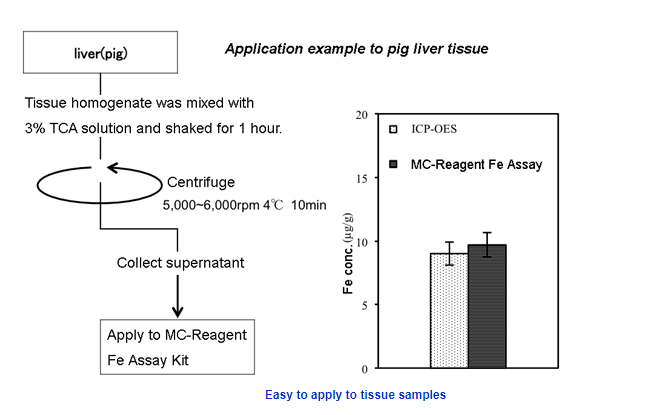Description
Iron assay kit (Ferrozine)
Product Description
Iron is a mineral which binds many proteins and enzymes, and plays important roles in living bodies. MC-Reagent Fe Assay Kit provides a simple and convenient tool for the determination of Ferrous and/or Ferric ion in a variety of biological samples such as cell lysates, tissue homogenates, serum, plasma, saliva, urine, tissue extract, plant extract, hair and food extract.
Performance
1. Sensitivity: O.D. at 200 µg/dL standard will be 0.08 - 0.25
2. Accuracy: ±10% of known concentration
3. Intra assay variation: C.V. is less than 5%
4. Assay range: 5 - 1,000 µg/dL

| Specifications | ||||||||||||||||||
|
| Content of this kit | ||||||
| ||||||
| References: Assay examples | ||||||||||
|
Additional Information
Size: |
100 Tests |
Type of Marker: |
Trace elements assay |
Marker: |
Fe |
Storage: |
2 - 8°C (don't freeze). |
Colorimetric: |
740-760 nm |
Assay range: |
10-1,000 ug/dL |
Usage: |
Urine, Serum, Tissue |
Remark: |
Iron (Fe) is an important pro-oxidant factor which produce hydroxyl radical by fenton reaction. CFE-005 and CFE-010 can be also applied to extractes from animal tissue, plants and hair samples. |






